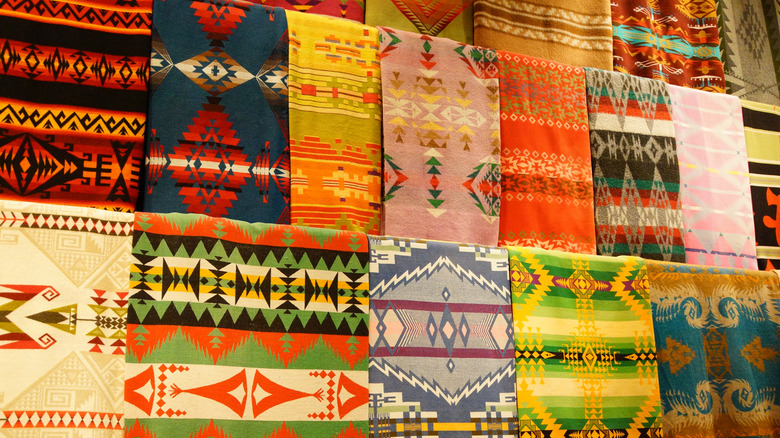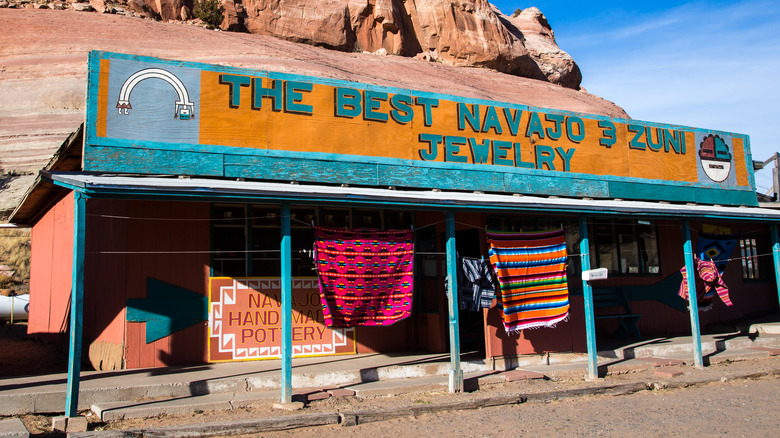The Real Reason Navajo Blankets Are So Valuable
The Navajo Nation is one of the largest Native American tribes in the U.S. As of the most recent census, they currently top the numbers as the biggest tribe by population, unseating the Cherokee, per US News. Members of the group mostly live on the largest reservation in the country — about 16 million acres, which sits mostly in Arizona but also covers parts of New Mexico and Utah, according to the Indian Health Service. The Navajo have called the southwestern U.S. home for well over a century.
Once at war with white settlers and other Native tribes, the Navajo honed a skill that helped them produce one of their most valuable creations: blankets. The Navajo are known for a lot of things, but their weaving skills are widely recognized. During the 17th century, the group picked up two skills from the Spanish — learning how to herd sheep and how to make wool, according to PBS. By the late 17th century they'd learned intricate weaving methods from the Pueblo. With the latter skill, the Navajo perfected the art of weaving and made such high-quality blankets that they could practically hold water. They had multiple uses as both coats and as blankets and showcased a variety of colors and designs.
The Navajo have continually evolved their techniques and designs
As a result of their durability, versatility, and decorative patterns, Navajo blankets became an item of value. Subsequently, the blankets were pricey. Those with the means, such as tribal chiefs, valued the blankets and wore them often, including for ceremonial reasons, per PBS.
As they continued to improve and hone their blanket-weaving skills, the Navajo started to evolve their techniques. It resulted in blankets with more styles and colors, and more elaborate designs — all of which took a dedicated amount of time, says the Traditional Fine Arts Organization. They soon grew their product output from blankets and wraps to rugs, and the demand for both continued to increase. Traders, in particular, drove this demand, and it further influenced regional designs. Eventually, the Navajo even started to feature their gods and spiritual figures in their woven creations.
By the 19th century, a Navajo blanket cost around $100 to $150 — that's during a period when men made about $5 a week, according to PBS. Today, people can purchase Navajo blankets or rugs from anywhere between under $500 to several thousand dollars (via Navajo Rug). Prices are dependent on size, age, tightness of the weave, and intricacy of design.

